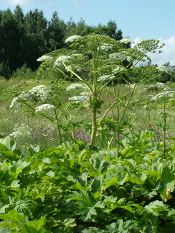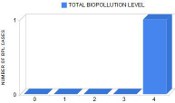What is BINPAS?
This is a system to translate the existing data on miscellaneous invasive alien species impacts into uniform biopollution measurement units. The name comes from: Biological Invasion Impact / Biopollution Assessment System.
Biopollution is defined as the impacts of invasive alien species (IAS) at the level which disturbs ecological quality of aquatic and terrestrial ecosystems by effects on: an individual (internal biological pollution by parasites or pathogens), a population (by genetic change, i.e. hybridization), a community (by structural shift), a habitat (by modification of physical-chemical conditions), an ecosystem (by alteration of energy and organic material flow). The biological and ecological effects of biopollution may also cause adverse economic consequences1,2.
Why BINPAS?
Bioinvasion science needs to reduce subjectivism in assessment and reporting the impacts caused by invasive alien species (IAS). On another side, a standardized description and evaluation of impacts is needed also for many practical and theoretical applications: prioritization of management options, compiling the target lists of unwanted introductions, interregional comparisons of the same IAS impacts, overall environmental status assessments taking into account the bioinvasion effects in particular territories or water bodies, etc.
BINPAS Aims
- To accumulate and distribute knowledge on bioinvasion impacts on native communities, habitats and ecosystem functioning,
- To make possible cross-taxon and interregional comparison of bioinvasion effects,
- To facilitate development and application of the bioinvasion assessment method(s),
- To provide a platform for constant update and quality control of data.
Why to register?
Registration to BINPAS is open for all willing to contribute with their data. Registered users have access to additional services such as user communication center, news provider, track of changes, etc. BINPAS data is also available for non-registered users (guests), which can view records, reports, diagrams, maps, etc., can not participate in data contribution and method application.
Data Entered
At present BINPAS contains data on 224 species assessed in 270 aquatic and terrestrial assessment units. Totally 609 assessments are done.| Aquatic environment | Terrestrial environment | Total | |
| Number of species | 186 | 38 | 224 |
| Number of species assessments | 492 | 117 | 609 |
| Number of assessment units | 170 | 100 | 270 |
| Number of assessment periods | 219 | 110 | 329 |
***
Cite BINPAS as:
BINPAS, 2010. Biological invasion impact / biopollution assessment system available from: http://www.corpi.ku.lt/databases/binpas/ (assessed online YYYY-MM-DD).
1. Elliott, M. 2003. Biological pollutants and biological pollution – an increasing cause for concern. Marine Pollution Bulletin 46, 275-280.
2. Olenin S, Minchin D, Daunys D, 2007. Assessment of biopollution in aquatic ecosystems. Marine pollution bulletin, 55: 379 – 394.

